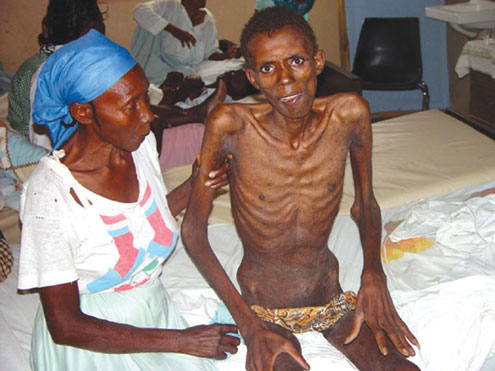An overview of Aids
What is Aids?
Human immunodeficiency virus (HIV) is a persistent, sometimes fatal illness that causes acquired immunodeficiency syndrome (AIDS) (HIV). HIV impairs your body's capacity to fight infection and disease by weakening your immune system.
HIV/AIDS has no known cure, however drugs help manage the infection and stop the disease's progression. International organizations are attempting to promote the accessibility of prevention strategies and treatment in resource-poor nations. Antiviral therapies for HIV have decreased AIDS fatalities globally.

Hiv Progression to AIDS
Even in countries with limited resources, the number of AIDS-related deaths has significantly dropped thanks to access to stronger antiviral therapies. The majority of HIV-positive individuals in the U.S. today don't progress to AIDS thanks to these life-saving medications. HIV usually progresses to AIDS if left untreated in 8 to 10 years.
Your immune system has been severely compromised when AIDS strikes. You'll be more susceptible to illnesses that a person with a strong immune system wouldn't typically get. They are referred to as opportunistic cancers or opportunistic infections.
Signs and symptoms of aids?
1. headaches and other aches and pains
2. swollen lymph nodes
3. recurrent fevers
4. night sweats
5. Persistent, unexplained fatigue
6. weight loss
7. Nausea, vomiting or Chronic diarrhea
8. skin rashes and bumps
9. recurrent oral or vaginal yeast infections
10. Persistent white spots or unusual lesions on your tongue or in your mouth
How does HIV become AIDS?
You can have an HIV infection, with few or no symptoms, for years before it turns into AIDS. AIDS is diagnosed when the CD4 T cell count falls below 200 or you have an AIDS-defining complication, such as a serious infection or cancer.
Cancers common to HIV/AIDS
Lymphoma : This cancer starts in the white blood cells. The most common early sign is painless swelling of the lymph nodes in your neck, armpit or groin.
Kaposi's sarcoma : A tumor of the blood vessel walls, Kaposi's sarcoma usually appears as pink, red or purple lesions on the skin and mouth. In people with darker skin, the lesions may look dark brown or black. Kaposi's sarcoma can also affect the internal organs, including the digestive tract and lungs.
HPV-related cancers : These are cancers caused by human papillomavirus (HPV) infection. They include anal, oral and cervical cancer.
What’s the difference between HIV and AIDS?
AIDS is brought on by the HIV virus. Acquired Immune Deficiency Syndrome is referred to as AIDS. There is a difference between HIV and AIDS. And not everyone who has HIV also has AIDS.
The virus that is spread from person to person is HIV. HIV gradually kills CD4 cells, also known as T cells, a vital type of immune system cell that aids in infection defense. Your body cannot effectively fight off infections when you don't have enough CD4 cells.
AIDS is the illness brought on by HIV's negative effects on your immune system. When you contract serious infections or have a very low CD4 cell count, you have AIDS. The most severe HIV stage, AIDS, eventually results in death.
Without treatment, it typically takes an HIV-positive person around 10 years to develop AIDS. The virus's harm is slowed down by treatment, which prolongs people's lifespans.